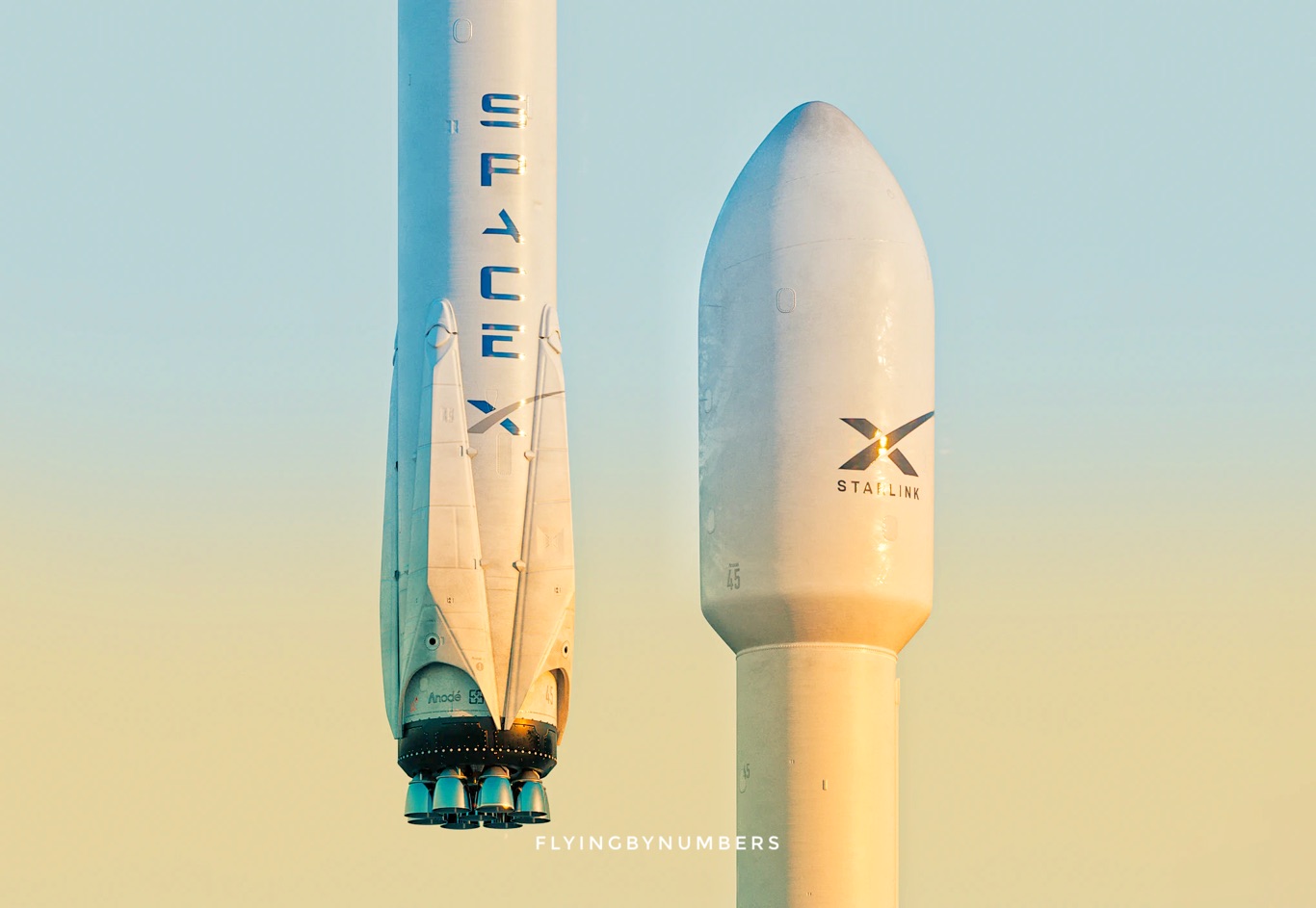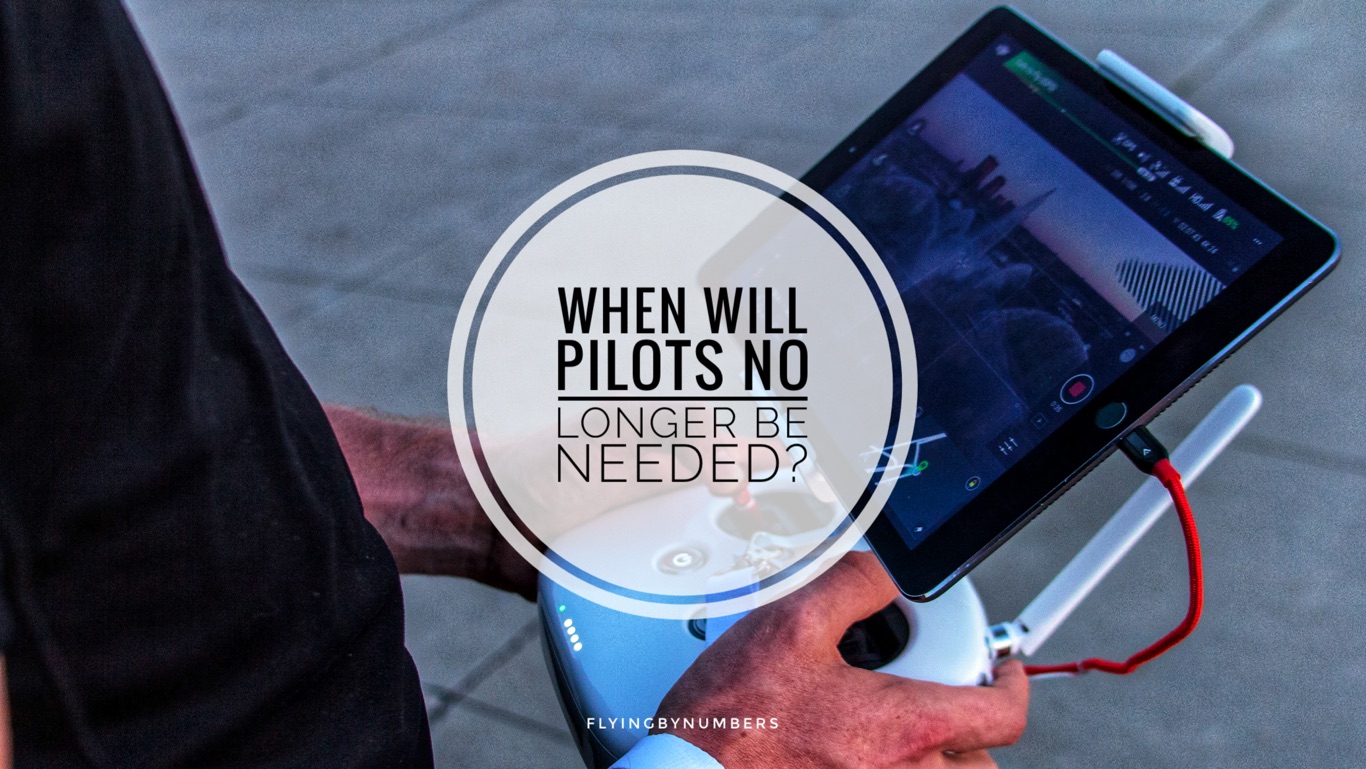When it comes to the future of airline pilots, there appears to be a disconnect between opinion and reality. This is likely due, in part, to the rise of autonomous technology in other industries. Another part is a lack of understanding of what pilots actually do when the autopilot is on, how the autopilot works, and a general awareness of the roles of pilots.
Analysts have been predicting pilotless aircraft for decades. Here’s a video from 2017 where analysts from Swiss Bank, UBS, were predicting the majority of commercial aircraft —both cargo and passenger — would only have one pilot by 2022. There is not a single commercial flight operating with one pilot. In fact, while the host asserts that planes already takeoff and land on their own, it wasn’t until 3 years after the interview that airbus announced a demonstrator performing the first automated takeoff — monitored by 2 pilots!
Willrobotstakemyjob’s machine learning algorithm rates the risk of commercial pilots losing their job to automation by 2030 as 32%. Yet, the public are also over optimistic, rating the risk of pilots jobs being automated by 2030 11% higher than the prediction, at 43%.
So, will the public and analysts continue to get their predictions dramatically wrong? Or are automated aircraft imminent, (again)? Finally, the magic question, when will pilots become obsolete?
Our view is that pilots are essential to the safe operation of an aircraft, and they will be needed for a long time! Not convinced? Here are five reasons why pilotless planes will be a long time coming.
Public opinion
Are the public willing to fly without pilots?
Let’s face it, flying is unnatural. Despite being statistically the safest form of transport in existence, there are plenty of nervous flyers. Pilots play a key role in helping reassure passengers. This carefully cultured pilot image forms an integral part of flying, from the pre-flight PA, to the fancy hats, and how airline pilots dress.
As a result, people tend to trust pilots.
- They know that pilots have gone through rigorous training and are experts in their field, and their presence helps to make them feel safe.
- If people thought that robots or computers were operating the aircraft alone, they would be hesitant to fly.
- The public still perceives flying as dangerous and wants a human being at the controls in case something goes wrong.
Public opinion on pilotless aircraft is remarkably consistent across the Atlantic, with separate studies in the USA and UK showing similar skepticism.
USA
Only 15% of Americans say that they would be comfortable as a passenger on an airplane that was completely pilotless (versus 81% who say that they would be not very/not at all comfortable with this)
2018 — IPSOS Polling
U.K
Only 17% of those questioned about autonomous flight said they would board such a plane, with more young people willing to give them a try
BBC — Three problems with pilotless planes
Arguably, the most interesting part of the IPSOS polling showed that public are relatively price insensitive. There is still a dominant majority of the American public that will not get on an aircraft without pilots, regardless of the price of the ticket. Two thirds of the public would refuse outright to fly on an aircraft, even if you shaved nearly a third off the price!
This point has been reinforced by separate studies, with 2017’s UBS bank study (shown below) showing that there is a considerable segment of the travelling public that will not fly on planes without pilots, regardless of the price.
Will this change in the future? Yes. Statistically, younger generations were more accepting of flying on an aircraft without pilots.
However, changing public perception can be a slow and winding process. The New York Times argued — after the Boeing 737 MAX disasters — that accidents like it might have set back passenger trust in Boeings automated systems for decades.
In the wake of a double disaster, Boeing has announced that it will release a software upgrade for the 737 Max. The company may indeed have solved the problem. It may be that the 737 Max will return to service with the patched software and never again suffer a mishap. The problem is that it’s hard to prove a negative. Passengers won’t have any faith in the fix until decades have passed.
Problems the autopilot can’t solve — NYT
Pilot Unions
Can unions slow the rate of change?
Like many transport workers, pilots have strong unions with extremely high uptake rates. The British pilot union BALPA claims over 85% of all commercial pilots in the UK are registered.
We represent over 10,000 pilots and are recognised in 23 different companies; that’s over 85% of all commercial pilots flying in the UK.
About Us — BALPA
These organisations represent the interests of pilots and make sure that they are treated fairly. The unions negotiate contracts with airlines that protect the jobs of pilots. Like any union, if members jobs are in danger of being replaced, the unions fight to keep them.
While unions have previously been derided for not modernising and moving with the times, pilot unions across the globe seem to be taking a more proactive approach to technological change:
- The official line is that they understand pilots jobs will eventually be reduced or lost entirely to automation, but pilot unions are campaigning hard to ensure the industry retains its safety levels.
- By appearing pragmatic whilst holding significant commercial and political sway, pilot unions are likely to have some success in delaying a shift towards automation.
- The Airline Pilots Union (ALPA) have already focused on the safety impacts of more automation, releasing a pretty damning white paper back in 2019 outlining the risks of reducing pilot numbers.
- The published paper into reducing crewing to single pilot operations has both NASA, and public opinion, on their side.
- Independent polling showed 96% of the American public thought that spending money on reducing pilots numbers was a waste of time, and would be better spent on other safety improvements.
History shows unions can be very effective at reducing the rate of change of their members jobs even when the prevailing public opinion is not on their side. By shining a spotlight towards uncomfortable topics, such as the risk of hacking of remotely piloted aircraft, alongside safety related issues, unions will seek to slow their introduction.

What’s the point?
Do pilotless aircraft make commercial sense?
Some believe having only one pilot on board would save airlines 10s of billions — with fully autonomous flight unlocking over $100 billion annually.
But, not everybody is convinced. And, it’s easy to see why. Even the analysts forecasting fully autonomous flight are predicting a switch to single pilot operations with an additional ground based pilot first.
Without considering indirect costs — such as insurance premiums or ticket discounts — the costs for removing any pilots from the cockpit quickly mount.

In the short term, before fully autonomous flight has been realised, NASA studies predict costs might even increase.
Looking at the direct benefits in turn, and it becomes clear why. For a step-change in increased costs — aside from reducing pilot wages — some purported benefits are dubious.
If the benefits for automating aircraft don’t outweigh the costs, what’s the point?
There are undoubtedly some aircraft efficiencies to be found by having fully autonomous flight, but it is unclear what role pilots play in some of the key factors that restrict airlines planning flights more efficiently.
The biggest concern for Ultra-Longhaul flights is Deep Vein Thrombosis from a combination of sitting for too long and also from dehydration
Gail Cross — Associate consultant at the National University Hospital in Singapore.
No First Mover Advantage
It might be better to adopt autonomous technology last.
First mover advantage is the idea that the first company to enter a new market will have a significant advantage over its competitors. This advantage can be in the form of brand recognition, economies of scale, access to resources, or simply lower operating margins.
A great example in the aeronautical field would be SpaceX and their reusable rocket design enabling cheap launches, and a quick domination of the low earth orbit broadband satellite service.

- By demonstrating a novel approach to rocket launches — hugely reducing payload costs — their market share is rapidly growing.
- This is enabling them to continue to develop and expand their core business, and leaving previous operators without the same reusable ability playing catchup.
For pilotless aircraft there is an argument that there is no first mover advantage. In fact, there could be a significant disadvantage to adopting the technology first.
Not only is the cost of updating new aircraft very high, in a highly scrutinised and safety critical industry, adopting a technology that could be seen as risky has a potential to backfire spectacularly.
All aircraft crashes are hugely watched, receiving global media attention. When Boeing’s 737 Max was involved in two high-profile crashes, the entire global fleet ended up banned for nearly two years. China suspended the model for 3 years.
The first pilotless aircraft crash will cause global media attention, and is likely to bankrupt any airline that solely relies on that type of aircraft. Airlines that are the first to switch to pilotless aircraft would be at a competitive disadvantage to those who hadn’t.
Insurance Issues
Are pilots really to blame for the majority of accidents?
There are a few reasons why insurance companies would be hesitant to insure pilotless aircraft. Here are three of the most important.
- Accountability
- Legislation
- Pilot safety contributions
Airlines buy policies to cover losses if an aircraft is damaged or destroyed. These policies also protect carriers against claims stemming from crash-related injuries and property damage. Premiums collectively cost the industry billions annually, making this expense a key determinant of an airline’s potential profit (or loss).
BBC — Things that could kill the pilotless airliner
If there is an accident, who is responsible?

Without an onboard captain legally responsible, is it the airline? The manufacturer of the aircraft? The software company that created the automation system?
Without pilots, it can be difficult to determine who is at fault.
Unlike the existing state of affairs, with thousands of previous cases and a well understood legal background, entirely new legislation is needed to allow aircraft to be flown without pilots.
With new and untested legal consequences, premiums are naturally higher — insurance companies don’t have the treasure trove of data they rely on for accurate pricing.
The additional safety provided by commercial pilots is the third and final reason why insurance companies are likely to require that airlines have pilots on board their aircraft for the foreseeable future.
This is because pilots provide a level of safety that cannot currently be replicated by automation. How can this be, when human error is the major cause in all accidents?
Every day in aviation, pilots, air traffic controllers, and other front-line personnel perform countless correct judgments and actions in a variety of operational environments. These judgments and actions are often the difference between an accident and a non-event. Ironically, data on these behaviors are rarely collected or analyzed.
Human Performance Contributions to Safety in Commercial Aviation — NASA
The key takeaway to NASA’s 2019 research is that while huge number of resources focus on studying where humans have got it wrong, significantly less research goes into looking at pilot’s positive contributions. AKA, the potentially thousands of times a day that pilot input stops something minor becoming a major incident.
How do we quantify this?
Until there is further widespread studies and understanding on exactly how pilots contribute to safety, it is impossible to accurately quantify the risk of replacing them. And if we can’t accurately quantify the risk, it’s almost impossible to insure.
Summary
If you’re considering becoming a pilot, don’t worry – we reckon your job is safe for at least 30 years!
In 2022, there are several barriers preventing pilots from becoming obsolete:

One of the major issues with replacing pilots is that these barriers aren’t like dominoes — knock one down and everything will fall into place.
The issues with removing pilots are often only loosely connected to each other. Pilotless aircraft may become physically possible from a technical, and legal perspective, but unless public opinion changes, it’s irrelevant. Equally, if the public are onboard, but the insurance firms aren’t — it’s still not a viable plan!
Failure to fully consider the human contributions to successful system performance in civil aviation represents a significant and largely unrecognised risk when making policy decisions about human roles and responsibilities
Human Performance Contributions to Safety — NASA
Will things eventually change? Certainly, and no doubt the trend towards higher automation and less direct pilot involvement will continue. But are we likely to see pilotless aircraft in the next 20+ years? I’m siding with NASA — it’s highly unlikely.
While some analysts have been predicting single pilot operations imminently for almost a decade, most conservative forecasts for the reduction to commercial single pilot operations suggest a 15–25 year timescale.
This would mean the average airline passenger would expect to see only one pilot from around 2040 onwards. However, some researchers have suggested commercial cargo flights could be single pilot within a decade.
Don Harris (Human Factors Professor studying single pilot operations at Coventry University) concludes that the single-crew airliner is still probably 20 years away, but that legislative developments could make that a reality sooner, albeit only for cargo aircraft.
Why airplanes might soon have just one pilot — CNN
Looking at when pilots will becoming obsolete entirely is arguably harder to predict than a reduction to single pilot operations. Some analysts believe NASA are correct — commercial flying with a single pilot won’t save much money — and therefore once single pilot operations are established there will be a rapid push to full automation.
Others believe that accountability, and public opinion issues, will mean that full automation will take longer to achieve than the transition from the current situation to single pilot operations.
We would take a balanced view, and estimate that full automation — aka when commercial pilots are made totally redundant — will be around 30-40 years from now. This would mean the average airline passenger would expect to get on an aircraft with no pilots from 2050 onwards.
However, the final concluding point is arguably the most overriding. In it’s current form, pilotless planes don’t make any business sense.
- The same UBS study showing many passengers are price insensitive — and wouldn’t go anywhere near a pilotless plane without some huge discounts — also predicted the average pilotless plane cost saving.
- By removing pilots, the average saving that would be passed onto passengers for US airlines would be around 11%, and European airlines a meagre 4%.
- The idea that any business would invest hundreds of millions and sacrifice a large portion of it’s customer base to offer a saving of between 4-11% seems fanciful.
While the public may think that airline pilots will be replaced by robots or computers in the next two decades, a detailed look at the problem would suggest otherwise.






